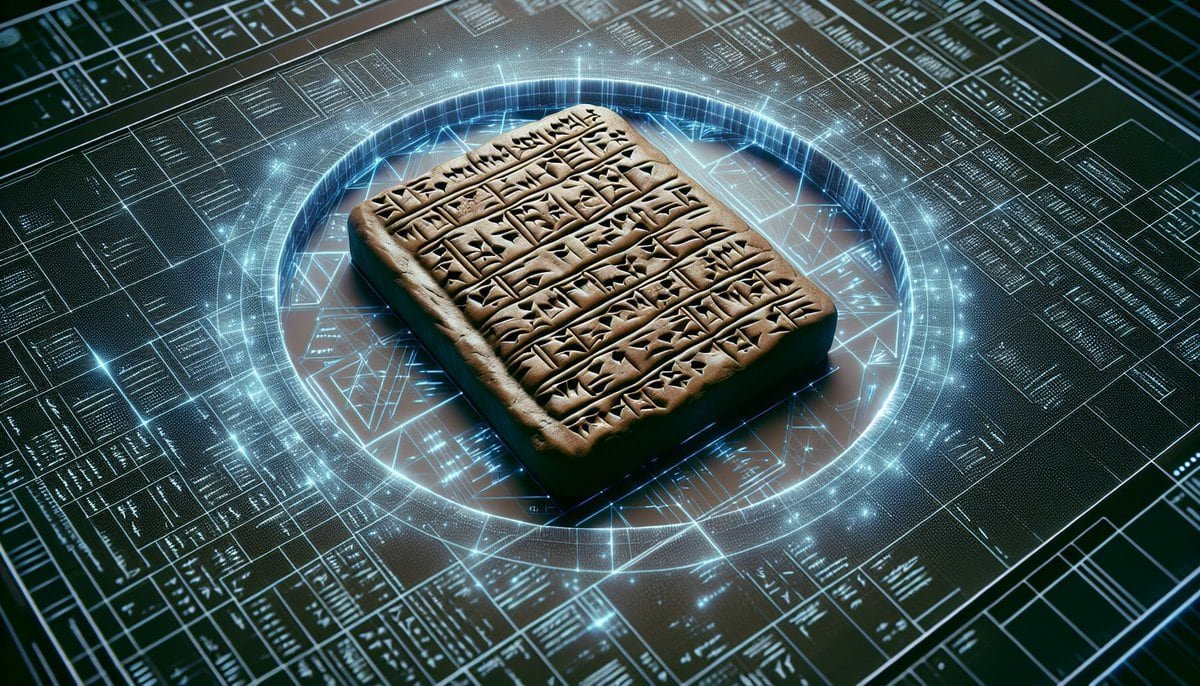In the fascinating world of Biblical Archaeological research, 3D modeling has emerged as a valuable tool for unraveling the secrets of the past. This innovative technology has revolutionized the way researchers analyze and interpret ancient artifacts, structures, and landscapes from biblical times. By creating faithful digital representations, archaeologists can virtually immerse themselves in the ancient world, exploring and uncovering new insights with unprecedented accuracy and detail. From reconstructing ancient cities to visualizing long-lost artifacts, 3D modeling has become an indispensable ally in the quest to understand the rich tapestry of biblical history.
Introduction
The field of Biblical Archaeology delves into the rich history of the Bible, seeking to uncover the physical remnants of ancient civilizations and validate the events described within the sacred text. Over the centuries, scholars and archaeologists have dedicated their efforts to excavating archaeological sites, unearthing artifacts, and piecing together the stories of the past. However, the advent of technological advancements, particularly the evolution of 3D modeling, has revolutionized the way in which Biblical Archaeology is conducted. This article will explore the significance of 3D modeling in this field, its benefits, case studies, challenges, and future directions.
1. The Significance of Biblical Archaeology
1.1 Understanding the Past through Archaeology
Biblical Archaeology plays a crucial role in understanding the historical context of biblical narratives. It serves as a bridge connecting the modern world with ancient civilizations, enabling a deeper comprehension of the events, people, and cultural practices described in the Bible. Through the study of archaeological remains, researchers gain insights into the material culture, social structures, and religious practices of ancient societies. By exploring the physical remains of ancient cities, temples, and artifacts, Biblical Archaeology validates the authenticity of biblical accounts and provides a tangible link to the past.
1.2 Importance of Accurate Reconstructions
Accurate reconstructions are vital in the field of Biblical Archaeology as they allow researchers and scholars to visualize and interpret the past with greater precision. Traditional methods of reconstructing ancient structures and cities, such as illustrations and physical models, often fall short in capturing the complex intricacies of historical sites. This is where 3D modeling plays a pivotal role. It enables the creation of realistic digital representations that accurately depict the architectural features, spatial layout, and intricate details of ancient structures. Such accurate reconstructions enhance our understanding of the past, allowing researchers to immerse themselves in an accurate representation of ancient cities and gain a deeper appreciation for the historical context.
2. Evolution of 3D Modeling
2.1 Early Approaches to Visualization
In the early stages of Biblical Archaeology, visualization was limited to two-dimensional drawings and illustrations based on excavated artifacts and architectural plans. While these methods provided valuable insights, they lacked the ability to fully convey the three-dimensional nature of ancient structures and landscapes. However, with the advent of computer technology, new possibilities emerged for visualizing archaeological sites in a more realistic and immersive manner.
2.2 Advancements in Computer Technology
Advancements in computer technology have revolutionized the field of 3D modeling, allowing for greater accuracy, complexity, and visual appeal. The utilization of specialized software and powerful computers has enabled archaeologists to create highly detailed and realistic 3D models of ancient sites, artifacts, and even entire landscapes. These advancements in computer technology have not only facilitated more accurate reconstructions but have also made the process more efficient and accessible to researchers worldwide.
3. Benefits of 3D Modeling in Biblical Archaeological Research
3.1 Enhanced Visualization
One of the key benefits of 3D modeling in Biblical Archaeological research is enhanced visualization. By creating three-dimensional models of ancient structures and landscapes, researchers can explore and analyze these virtual reconstructions from different angles and perspectives. This allows for a deeper understanding of architectural features, spatial relationships, and the overall layout of ancient cities and temples. Through enhanced visualization, researchers can gain valuable insights into the purpose, function, and significance of various structures within an archaeological site.
3.2 Preservation of Fragile Artifacts
Another significant advantage of 3D modeling is its ability to contribute to the preservation of fragile artifacts. Ancient artifacts, particularly those made of delicate materials such as clay, wood, or parchment, are susceptible to degradation over time. By utilizing 3D scanning techniques, researchers can create digital replicas of these artifacts, preserving their fragile nature in a permanent and accessible form. This not only ensures the longevity of these artifacts but also allows for closer examination by researchers without the risk of damage.
3.3 Analysis and Interpretation of Data
3D modeling also facilitates the analysis and interpretation of data gathered during archaeological excavations. Through the integration of various types of data, such as architectural plans, excavation reports, and artifact records, researchers can create comprehensive 3D models that provide a holistic view of ancient sites. These models can be manipulated and analyzed, allowing researchers to test hypotheses, simulate ancient processes, and gain further insights into the context and usage of archaeological sites.
4. Case Studies Utilizing 3D Modeling in Biblical Archaeological Research
4.1 Virtual Reconstruction of Ancient Temples
One notable case study that showcases the power of 3D modeling in Biblical Archaeological research is the virtual reconstruction of ancient temples. By utilizing historical records, excavation findings, and architectural plans, researchers can create accurate and immersive virtual reconstructions of these temples. These virtual reconstructions allow scholars and the general public to experience and explore these ancient structures, gaining a deeper understanding of their historical and cultural significance.
4.2 Virtual Tours of Lost Biblical Sites
Another compelling application of 3D modeling in Biblical Archaeological research is the creation of virtual tours of lost biblical sites. Through the combination of 3D models, historical data, and geographical information, researchers can recreate entire ancient cities that are no longer physically accessible or have been destroyed over time. These virtual tours offer a unique opportunity for individuals to virtually experience the grandeur of these lost cities and gain a deeper appreciation for the biblical narratives associated with them.
5. Challenges and Limitations of 3D Modeling in Biblical Archaeological Research
5.1 Accuracy and Authenticity
Despite its numerous benefits, 3D modeling in Biblical Archaeological research still faces challenges regarding accuracy and authenticity. The creation of accurate and authentic 3D models relies heavily on available data, which can sometimes be incomplete or uncertain. Researchers must carefully evaluate and analyze the available information to ensure the fidelity of their reconstructions. Additionally, subjective interpretations may introduce biases and inaccuracies into the models, emphasizing the need for transparent and robust methodologies in 3D modeling.
5.2 Accessibility and Cost
Another challenge in utilizing 3D modeling in Biblical Archaeological research is its accessibility and cost. The creation of high-quality 3D models often requires specialized software, hardware, and technical expertise, which may not be readily available to all researchers. The costs associated with acquiring and maintaining these technologies can also pose a significant barrier, particularly for smaller research institutions or projects with limited funding. To mitigate these challenges, collaboration and resource sharing among researchers and institutions are crucial.
5.3 Technological Limitations
Technological limitations also present challenges in the use of 3D modeling in Biblical Archaeological research. Despite advancements in computer technology, certain aspects of archaeological sites may still prove difficult to accurately capture and recreate. Fine details, such as intricate carvings, faded paintings, or faint inscriptions, may be challenging to replicate with precision. Additionally, creating realistic simulations of ancient landscapes or natural phenomena requires advanced algorithms and computational power, which may not yet be fully realized.
6. Future Directions and Possibilities
6.1 Integration of Virtual Reality and Augmented Reality
The integration of virtual reality (VR) and augmented reality (AR) holds immense potential for the future of 3D modeling in Biblical Archaeological research. VR allows users to immerse themselves in realistic and interactive virtual environments, enabling a more engaging and educational experience. AR, on the other hand, overlays digital information onto the real world, allowing users to explore archaeological sites and artifacts in their physical context. The combination of these technologies could revolutionize the way researchers and the general public engage with ancient history.
6.2 Utilization of Artificial Intelligence
Artificial Intelligence (AI) has the potential to significantly enhance the capabilities of 3D modeling in Biblical Archaeological research. AI algorithms could assist in automating the reconstruction process, analyzing vast amounts of data, and identifying patterns or correlations that humans might miss. Machine learning algorithms could also enable the recognition and interpretation of ancient scripts, languages, and inscriptions, aiding in the decipherment and understanding of ancient texts.
6.3 Collaborative Research and Data Sharing
Collaboration and data sharing are vital for the future of 3D modeling in Biblical Archaeological research. By pooling together resources, knowledge, and expertise, researchers can overcome the challenges of limited accessibility and cost. Open-access databases and online platforms for sharing 3D models, data, and research findings can accelerate progress in the field and enable global collaboration. Collaborative research can also foster interdisciplinary approaches, combining expertise from various fields to gain a more comprehensive understanding of the past.
7. Conclusion
In conclusion, 3D modeling has emerged as a powerful and indispensable tool in Biblical Archaeological research. It enables enhanced visualization, preserves fragile artifacts, facilitates data analysis and interpretation, and opens up new avenues for immersive experiences and educational opportunities. While challenges and limitations persist, ongoing advancements in technology and collaborative efforts hold promise for the future of 3D modeling in this field. The fusion of 3D modeling with virtual reality, augmented reality, artificial intelligence, and collaborative research will continue to shape the way we explore and understand the ancient world portrayed in the Bible.






